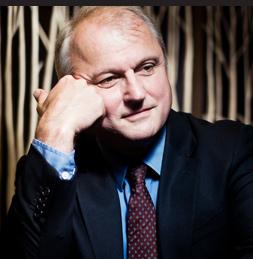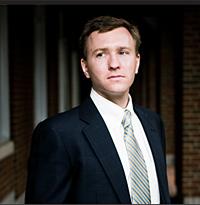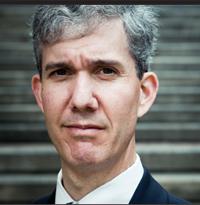Taking Stock
In July, the federal government pushed through an unprecedented package of reforms to prevent another financial crisis. But will they work?

Standing in the White House briefing room in June, the president struck a defiant tone."It is an undisputable fact that one of the most significant contributors to our economic downturn was a lack of adequate regulatory structures to prevent abuse and excess," said President Obama, who, over the next 20 minutes, ran through a litany of reforms intended to rein in the behavior that led to the worst financial crisis since the Great Depression. In less than a month, many of those recommendations were passed into law.
The 2,500-page Dodd-Frank Wall Street Reform and Consumer Protection Act was one development in a wave of efforts beginning with the Troubled Assets Relief Program, or TARP, designed to help the nation recover from the economic collapse and ensure that another doesn't happen in the future. And almost from the beginning, Tuck was there. Many of the president's proposals reflected recommendations of the Squam Lake Group, a nonpartisan panel of 15 leading academics who came together in the fall of 2008 to provide guidance on market reform. The group, named after the New Hampshire lake on whose shores the first meeting was held, included three Tuck faculty members: Kenneth French, The Carl E. and Catherine M. Heidt Professor of Finance; Matthew Slaughter, associate dean for the MBA program and Signal Companies' Professor of Management; and Andrew Bernard, Jack Byrne Professor of Economics.
There are some people who say 'let the government and taxpayers save us, but let them stay on the sidelines.' They want to have their cake and eat it too."
B. Espen Eckbo
Tuck Centennial Professor of Finance

With many of the group's recommendations incorporated in some fashion into the recent law, we asked five faculty members for their thoughts on whether these recommendations can be successfully implemented and whether they will prevent—or at least mitigate—another crisis. The results, not surprisingly, are mixed. While all are generally positive about the intent of the reforms, no one is willing to declare them a success without first seeing how they will be put into practice.
"The big challenge with the Dodd-Frank Act is that the regulators themselves are charged with making a lot of the rules," says Kenneth French. "It's hard to say whether the Act will succeed." While he credits legislators with rightly identifying the areas needing improvement, French is less convinced that they have enacted the necessary fixes. "These issues are complicated. The academic in me would rather take the time to get the right answer, while the politicians felt it was more important to get an answer quickly," says French, who is also a research associate at the National Bureau of Economic Research. "They did a good job of trying to figure out where there might be problems, but these are horribly hard problems and, in many ways, they just passed the problems on to the regulators."
His colleague Matthew Slaughter, also an NBER research associate, agrees. "If I can use a teaching metaphor, I would give them an incomplete," he says. "Despite there being 2,500 pages in the law, just exactly how it will change financial regulation is unknown because regulatory implementation of the law remains very unclear."
In some areas, the new legislation consolidates regulation under the Federal Reserve, as the Squam Lake Group recommended. In others, however, it diffuses responsibility to a new council of regulators from 10 different agencies of which French and Slaughter are skeptical. "That seems more like a political body than an oversight body," says French. "The idea that you get 10 agencies together in a room and ask them to solve complicated and highly political problems—I don't see how that can work."
Causes of Collapse
In associate professor Jonathan Lewellen's estimation, the financial crisis was the result of a confluence of six factors. First, banks were too highly leveraged with debt. They also took on too much risk with investments such as subprime mortgage-backed securities. And they were so incredibly interdependent that it was difficult for one to extract itself from another when one failed. Lewellen also cites plain old bad luck in decisions made by firms such as AIG to issue so many credit-default swaps to insure investments that appeared at the time to be sound but which turned out not to be. The crisis was further fueled by loose monetary policy from the Federal Reserve, which kept interest rates low to encourage borrowing. Finally, there was housing policy, which encouraged and even subsidized mortgages through Fannie Mae and Freddie Mac to people who could not afford them.
Of those six factors, says Lewellen, the current reforms only address the first three. Bad luck of course, is impossible to correct. But the Federal Reserve continues to set interest rates at record low levels, in part to spur economic growth. Housing policy also remains unchanged. In fact, the role of government mortgage backers Fannie Mae and Freddie Mac has, if anything, expanded since the crisis. "Now they are practically the only mortgage providers in the country," says Lewellen, who teaches the core Capital Markets course at Tuck, "backing roughly 90 percent of all mortgages."
It is three of these six areas—too much debt, too much risk, and too much interconnectedness—that the government has attempted to address through its new regulatory framework. One of the goals of the Dodd-Frank Act has been to deal with the so-called too big to fail (TBTF) institutions, companies so large and interconnected that their collapse threatens the entire system. Under the new legislation, the Federal Reserve will have new powers to oversee bank holding companies and other TBTF institutions that had previously been exempt from Federal Deposit Insurance Corporation (FDIC) oversight. Not only will the Federal Reserve be responsible for sounding the alarm if one of these institutions shows signs of foundering, it is also charged with developing a framework for the orderly dissolution of such companies if they do fail.
The government now has the power to intervene earlier, to identify firms before failure, take them over, and sell off their assets in an orderly way."
Jonathan Lewellen
Tuck Associate Professor

Jonathan Lewellen
Tuck Associate Professor
"The government now has the power to intervene earlier," says Lewellen, "to identify firms before failure, take them over, and sell off their assets in an orderly way." He says another positive aspect of the new legislation is the authorization of clearinghouses for financial instruments such as credit-default swaps, the complicated insurance mechanisms issued to investment banks that led to the bankruptcy of AIG and other insurance firms. Rather than having a scenario in which two institutions are on the hook to each other, such a clearinghouse would spread the risk among many institutions. "You would go from two banks having each other as counterparties to a situation in which there are 20 banks and they each have a clearinghouse as a counterparty," explains Lewellen. "If one defaults, the implications for the other 19 are not so bad."
Too Big to Fail?
While such measures could help keep TBTF institutions from contaminating the system, the government may have missed an opportunity to solve the problem by limiting the risk that banks and other financial institutions assume. This is because of the way the government handled the TARP program, in which it paid off Goldman Sachs and other creditors of companies such as Merrill Lynch and AIG at 100 cents on the dollar, basically insulating them from the negative effects of risk. "That's a problem with creditors getting too comfortable, saying the government is going to bail us out," says Lewellen. "I think it would have been better to make the lender bear some of the losses, maybe receiving only 80 to 90 cents on the dollar."
Despite the lingering bad taste of TARP, however, B. Espen Eckbo, Tuck Centennial Professor of Finance, believes the program has generally been successful. Eckbo has conducted extensive research on bank bailouts in countries around the world, including those in Sweden and Norway in the 1990s, when governments successfully intervened in failed financial institutions as an "owner of last resort." If there was a problem with the TARP program, Eckbo argues, it was that it didn't go far enough. In the Scandinavian countries, the government took over banks as a majority shareholder, separated out trouble assets into so-called "bad banks," and quickly reorganized the rest into "good banks" before selling them back into private hands.
The United States government, by contrast, was tentative in its intervention, attempting to spin off toxic assets without first taking control. "In the U.S., when they tried to establish a bad-bank system by selling off the worst loans, you had this moral hazard problem: the worst loans would be put to buyers and they wouldn't know how to price them. In Sweden, they owned both sides of the banks and wrote down the bad assets prior to selling them."
Eckbo says that when the U.S. government finally did take over as majority shareholder in several financial institutions, it successfully reorganized them. "They wanted to stay back and be passive as owners, [but] that was really driven by Washington politics," says Eckbo, founding director of Tuck's Lindenauer Center for Corporate Governance. "When you own them, you have to take responsibility and behave like any other private investor."
Thankfully, he says, the government overcame its reticence and took an active role in corporate governance. Though he is not advocating for direct government intervention, Eckbo approves of the job the U.S. has done since becoming involved. "There are some people who say, 'let the government and taxpayers save us, but let them stay on the sidelines.' They want to have their cake and eat it too," he says. "If you are asking for taxpayers' money, you have to expect them to be just as hard-hitting as any other investor."
The question is, Will investors have the same appetite to put the same amount of money in these funds going forward? And the answer is, Clearly, they won't."
Colin C. Blaydon
Dean emeritus and William and Joseph Buchanan Professor of Management

Eckbo was recently asked by the General Accounting Office to assess the government's performance in reorganizing AIG and he gave it generally high marks. "They are doing a reasonable job so far," he says. "I think their incentives are right. They are trying to dress up these companies so they can sell them in the best possible form." It remains to be seen whether the government will get out more gracefully than it got in. "Their biggest problem is going to be figuring out how to exit. Are they preparing for an IPO? Are they are preparing for a sell-off? It's hard to know exactly what is going to happen."
Chinese Walls
Even if, with TARP, the government shielded banks from the consequences of risk, it has moved in at least one way to make those consequences apparent in the latest round of financial reform. This came through the implementation of the Volcker Rule, a proposal by former Federal Reserve chairman Paul Volcker that separates the depository and investment sides of banks by prohibiting them from using their own money for trading or investing in private equity and hedge fund investments. It was enshrined into law through the Dodd-Frank Act but drew criticism from some who said it would negatively affect the banks' ability to invest and eventually lead to a drying-up of credit. Others have argued that banks will divest themselves from proprietary trading and private equity investing entirely.
That contingency is "highly unlikely," says Colin C. Blaydon, dean emeritus and William and Joseph Buchanan Professor of Management. First, explains Blaydon, the 18-month phase-in period for these rules gives banks ample time to adjust their practices. And second, the majority of a bank's private equity investments have been made with money from wealthy clients or institutions such as pension funds and endowments. "To the extent that banks made profits off their investments, it may put pressure on them," says Blaydon, the director of Tuck's Center for Private Equity and Entrepreneurship. But banks can still charge fees on other people's money, which remains the greatest source of their profits. "It may diminish their performance, but not by very much."
As for independent private equity firms, Blaydon says they have been unfairly lumped in with banks in causing the collapse. In fact, private equity firms have remained largely immune to the crisis themselves—only the money they used to invest has been at risk—because most private equity investments are illiquid; the investors' money is locked up until the investments mature. "They make a commitment to a 10-year fund, and when the fund is successful they realize gains through dividends. But until that happens, they can't ask for their money back."
Of course, in the most recent financial meltdown, the failure of those investments did have a significant impact on institutional investors. "College endowments, including Dartmouth's, were forced to sell marketable securities they didn't want to sell because they couldn't get money out of these alternative investments," says Blaydon. "In that sense, they helped create a level of liquidity that made capital markets less flexible."
"A major reason we had a worldwide financial crisis is that banks like Bear Stearns and Lehman Brothers conducted so much business with companies around the world."
Matthew Slaughter
Associate dean for the MBA program and Signal Companies' Professor of Management

New regulations in the Dodd-Frank Act to make investments more transparent may help limit investors' ability to make risky investments. But in a sense, Blaydon says the damage has already been done—seeing their investments tied up in these private equity firms when the collapse occurred will make people think twice about such investments in the future. "The big impact in this sector is going to come from an enormous reduction in the appetite for illiquid investments," says Blaydon. "The question is, Will investors have the same appetite to put the same amount of money in these funds going forward? And the answer is, Clearly, they won't."
Small World
Whatever the reforms do to limit risk in the system, the fact remains that such investments would never have been so risky had banks had enough capital on hand to cover them when creditors came calling. The Dodd-Frank Act calls on regulators to set capital requirements to limit debt by ensuring that institutions have more cash on hand at any time. The real venue in which such controls are being hammered out, however, is through the Basel Accords, a set of recommendations proposed by representatives from central banks and regulatory authorities meeting in Switzerland's third-most populous city.
The international focus is essential, says Slaughter, because of the interconnectedness of banks, not only domestically, but also around the world. "A major reason we had a worldwide financial crisis is that banks like Bear Stearns and Lehman Brothers conducted so much business with companies around the world," he says. "The runs on these U.S. banks raised fear and uncertainty not just in the United States but in many other countries as well."
The recommendations from the latest round of talks, called Basel III, have so far been underwhelming. Released in September, they would require banks to hold 4.5 percent capital for their primary investments by 2015, with another 2.5 percent by 2018, for a total of seven percent. (Regulators can impose another 2.5 percent during boom times when credit is flowing particularly easily.) Slaughter says those modest amounts and the protracted phase-in time ultimately limit its effectiveness. "Giving countries eight years to implement these regulations is too long," he says. "In the meantime, we run the risk of having heavily leveraged institutions again fall into trouble."
Chief among the challenges of imposing tougher capital controls has been pushback from banks arguing that higher requirements would curtail lending and limit economic growth. But Slaughter suggests that such an argument effectively puts the cart before the horse. "Should you really be doing that much lending in the first place if you are accounting for the true economic cost of such loans?" he asks rhetorically.
Eckbo argues that the exact percentage of capital might not be as important as the monitoring system that is created to track it. "It might be better to have a capital requirement of eight percent and then monitor it closely than to have an even higher capital requirement [with poor enforcement]," he says.
At the end of the day, however, it is highly unlikely that any legislation will eliminate the possibility of economic downturns, or even meltdowns. "In the last 100 years, there have been more than 100 of these meltdowns worldwide," says Eckbo. "It happens across countries with very different systems. We are not going to get rid of these completely."
Nor should we, says Jonathan Lewellen. After all, the last 30 years have seen unprecedented financial growth, with only two relatively minor recessions before the latest downturn. "You don't want to get rid of the upside of growth simply to get rid of one crisis every 30 or 40 years," adds Lewellen. The real challenge is how to set up controls that allow for lending and growth, while minimizing the effects of the crises that do occur. Despite the best intentions of government regulators, academics, and the banks themselves, that question is still open.